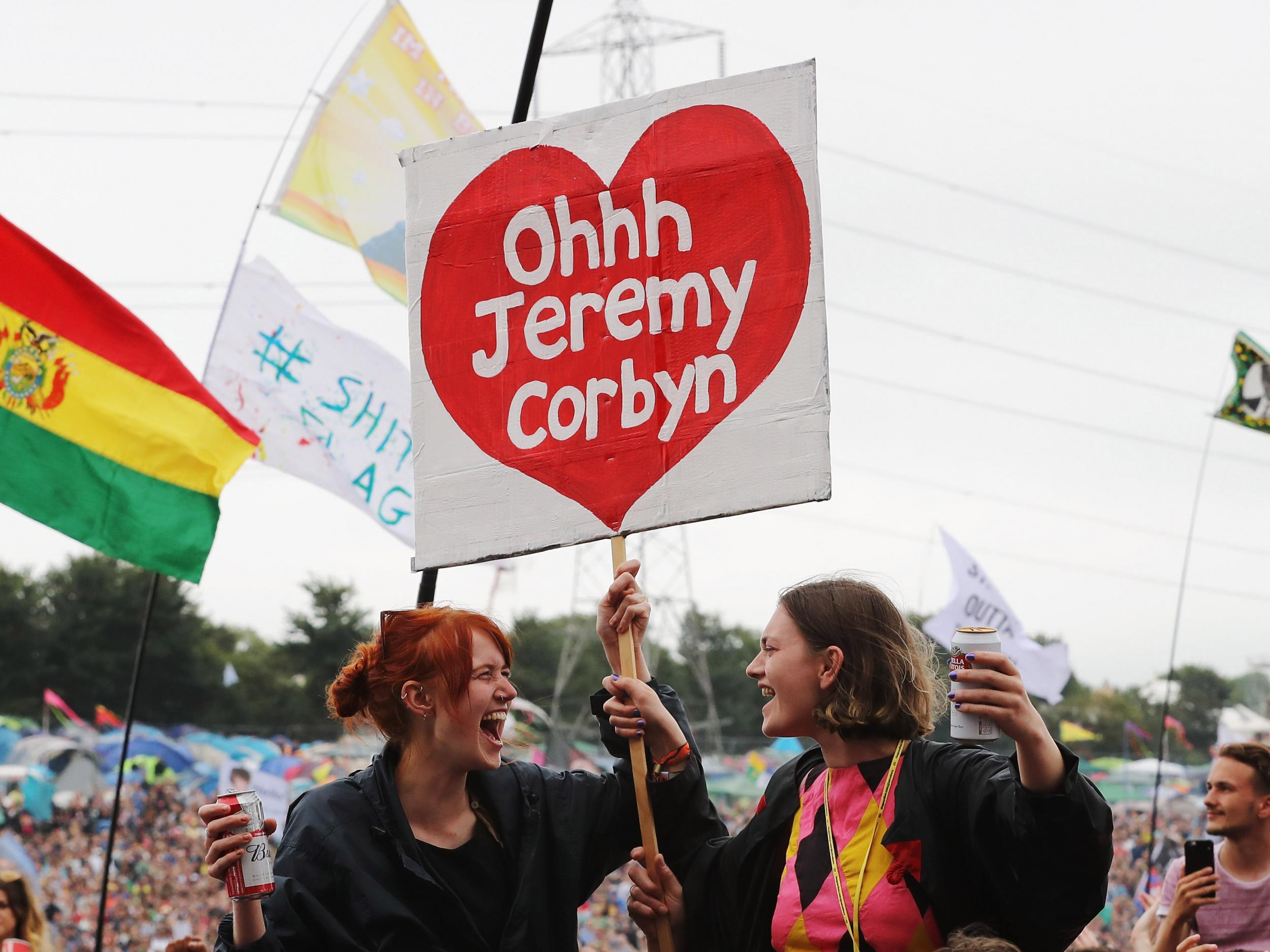'Youthquake' credited with boosting Jeremy Corbyn at 2017 election did not exist, finds study
Turnout among young voters ‘did not significantly increase in 2017’, debunking claims that youth surge cost Tories their parliamentary majority

Your support helps us to tell the story
From reproductive rights to climate change to Big Tech, The Independent is on the ground when the story is developing. Whether it's investigating the financials of Elon Musk's pro-Trump PAC or producing our latest documentary, 'The A Word', which shines a light on the American women fighting for reproductive rights, we know how important it is to parse out the facts from the messaging.
At such a critical moment in US history, we need reporters on the ground. Your donation allows us to keep sending journalists to speak to both sides of the story.
The Independent is trusted by Americans across the entire political spectrum. And unlike many other quality news outlets, we choose not to lock Americans out of our reporting and analysis with paywalls. We believe quality journalism should be available to everyone, paid for by those who can afford it.
Your support makes all the difference.The youth surge that was credited with helping Jeremy Corbyn’s Labour Party defy electoral expectations in last year’s general election did not actually exist, a new study has found.
The British Election Study (BES) said turnout among young people did not increase in 2017 and may even have fallen among the youngest voters, debunking the idea of a “youthquake” that was widely thought to explain Labour’s improved performance.
While Labour did do better among young voters than in 2015, Mr Corbyn did not, as has been suggested, significantly increase turnout among young people who had not previously cast a ballot.
The idea of a “youthquake” was seen as so significant in the 2017 election, when Labour’s improved showing dramatically wiped out Theresa May’s parliamentary majority, that the phrase was selected by Oxford Dictionaries as its word of the year.
However, the BES study found that turnout among 18- to 25-year-olds was between 40 and 50 per cent in both the 2015 and 2017 elections, and actually dropped slightly among 18- to 21-year-olds in 2017.
Instead, the study found, the only significant rise in turnout was among voters aged between 30 and 40.
The authors of the BES research said the idea of a “youthquake” was “based on anecdotes” about Mr Corbyn’s appeal to young people and supported by flawed post-election polls that suggested youth turnout had increased by between 12 and 16 per cent.
While turnout in constituencies with lots of young people did rise, the study found no evidence that this was caused by more young people heading to the ballot box.
“There is no evidence of a surge in voter turnout amongst the youngest eligible voters,” the authors said. “Indeed turnout in the youngest age group is actually slightly lower in our 2017 survey.
“There was likely a small increase in turnout across a large age range, with a slightly larger rise for those aged 30-40. The margin of error means that we cannot rule out a small increase (or decrease) in youth turnout in 2017.
“We can be confident, though, that there was no dramatic surge in youth turnout of the sort suggested by some other surveys. In short, there was no ‘youthquake’.”
Explaining why the idea of a “youthquake” took hold, they added: “In part it is because political commentary is prone to believing that what politicians set out to do is effective, even if there is no concrete evidence that it is.
“Increasing youth turnout was part of Corbyn’s political strategy. As Labour did unexpectedly well, it is not unreasonable to think that strategy might have paid off, even though this turns out not to be the case.”
The researchers said the conclusion that a “youthquake” did not take place was not surprising, because turnout among different age groups tends to stay relatively consistent between elections. Young people are still much less likely to vote than older people, and this has not changed significantly over time.
The study found that Labour increased its vote among every age group except the over-70s.
But the biggest shift last year was an increase in the number of older people voting Conservative, as many former Ukip backers switched their support to the Tories.
The BES data comes from a face-to-face survey with members of the public, which is then cross-checked against data from the electoral registers. It is seen to be more reliable than the telephone and online surveys used by many polling companies because these are less likely to include non-voters and more likely to see participants saying they voted when they did not.
Join our commenting forum
Join thought-provoking conversations, follow other Independent readers and see their replies
Comments